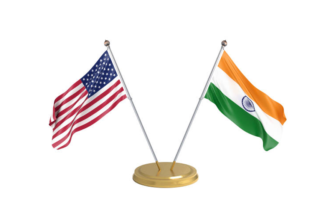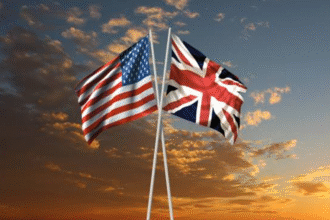Canada is the political, economic, and diplomatic terrain of North America, is shaped in great part by US ties. Being the two biggest trading partners in the Western Hemisphere, the connection between Canada and the United States affects not only their economies but also more general world trade dynamics. These countries have an economic cooperation among the biggest in the world, trading goods valued at over $760 billion yearly. But the nature of this partnership has changed recently as political differences, trade tariffs, and national security issues cause growing conflict.
Focusing on the impact of trade policies, the function of tariffs, and the continuous diplomatic challenges that still shape Canada-US relations, this article will investigate their complexity.
Why are US relations with Canada important?
The economic stability and progress of both countries depend on US ties. Apart from being the main economic partners, they also have cultural and historical links that have laid a strong basis for collaboration. Trade between the two countries covers a broad spectrum including energy, technology, automobile, and agricultural. The two nations cooperate closely in fields including transportation and infrastructure; Canada is the top foreign oil supplier to the United States.
For instance, their economic success is closely related to the automotive industry, which entails supply chains spanning both nations. With parts produced in Canada and subsequently transported to the US for final assembly, both nations’ automobile sectors in 2024 mostly depended on integrated production methods. This degree of economic interdependence reveals the close connection between the two countries to their mutual development.
Any disturbance to Canada-US relations has broad consequences. Changes in tariffs, laws, or trade agreements can cause uncertainty for companies on both sides of the border, so influencing everything,i ncluding employment and pricing. Therefore, Canada’s stability is compromised. Not only for legislators but also for companies, employees, and people in general, US relations are of great relevance.
Tariffs' Place in Canadian Policy US Relationship
Tariff introduction has been one of the most important and divisive topics in Canada-US relations lately. To safeguard American businesses, the Trump administration taxed Canadian steel and aluminum as well as other commodities. Set at 25%, the tariffs on steel and aluminum fit a larger protectionist agenda meant to lower the trade deficit and boost American industry.
One of the biggest exporters of aluminum and steel worldwide, Canada, reacted angrily to these tariffs. In response, Canada levied retaliatory tariffs on a range of American products, including consumer goods and agricultural products. The back-and-forth over tariffs became a key point of contention in Canada-US relations, undermining the historically close economic ties between the two nations.
These taxes damage American as well as Canadian companies. Industries depending on the export of steel and aluminum suffered greatly in Canada, resulting in job losses and disrupted supply lines. US companies depending on Canadian exports meanwhile paid more since tariffs caused price increases. The economic disruption caused by these tariffs demonstrated just how sensitive Canada US relations can be to unilateral trade policies.
The continuous tariff arguments have made clear how much more cooperative trade between the two countries is needed. Resolving these tariff problems will be a top focus under Prime Minister Mark Carney’s government, which took office in April 2025. Carney has called for negotiations to address the tariffs and to find a more balanced approach to trade between the two countries. Still, this is a complicated problem that will call for both countries to participate in earnest negotiations. Read another article on Canada’s Response to U.S. Tariff Threats
Diplomatic Challenges Impacting Canada-US Relations
While trade policies have been the most visible issue in Canada US relations, there are also broader diplomatic challenges that complicate the relationship. These include differences in domestic policies, international security concerns, and political rhetoric that sometimes undermines cooperation.
One area of concern has been the differing approaches to border security and immigration. Under the Trump administration, the US adopted a more restrictive stance on immigration, which included heightened border security measures and a focus on reducing illegal immigration. Canada, on the other hand, has maintained a more open and welcoming stance towards refugees and immigrants. These contrasting positions have at times led to tensions between the two nations, especially in areas like asylum seekers and migrant policy.
Another diplomatic challenge has been the ongoing concerns about the opioid crisis. The US has frequently criticized Canada for not doing enough to stop the flow of fentanyl and other opioids into the United States, a situation that has been exacerbated by cross-border smuggling. In response, Canada has argued that it has taken significant steps to address the opioid crisis domestically and that cooperation between the two nations is essential to tackling the problem.
Despite these differences, both nations have consistently worked to maintain their strategic partnership. The relationship between Canada and the United States is, after all, built on mutual interests in security, trade, and global stability. Cooperation on issues like counterterrorism, international trade, and climate change is essential to both countries’ long-term prosperity.
What’s Next for Canada-US Relations?
Looking forward, the future of Canada-US relations will largely depend on the ability of both nations to navigate the challenges that currently exist. The imposition of tariffs and other trade barriers may remain a point of contention, but there are also opportunities for collaboration. Carney’s administration has expressed a willingness to engage in negotiations that aim to resolve trade disputes and address issues like tariffs on Canadian steel and aluminum. There is hope that, through diplomacy and mutual understanding, a more balanced and fair trade agreement can be reached.
Moreover, as both nations face the challenges of a changing global economy, they will need to strengthen their economic cooperation in areas like technology, energy, and infrastructure. Canada’s role as a major supplier of natural resources to the US, coupled with its expertise in clean energy technologies, offers significant potential for future collaboration.
The political climate in both countries will also play a crucial role in shaping Canada-US relations. As new leaders emerge and shift political priorities, the diplomatic focus may change. However, the importance of the bilateral relationship will remain constant.
Conclusion
In conclusion, Canada-US relations are a cornerstone of North American and global prosperity. While recent years have brought challenges, particularly in the form of trade tariffs and political disagreement, —the potential for positive change remains. Both nations recognize the importance of their partnership, and the ongoing efforts to resolve trade disputes, address diplomatic concerns, and expand areas ol cooperation will be key to shaping the future of Canada-US relations. By focusing on collaboration, dialogue, and understanding, both countries can continue to build a stronger, more resilient relationship for years to come.








